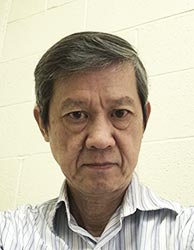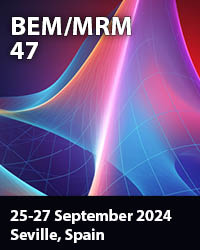 The George Green Medal was established by the University of Mississippi at Oxford, Mississippi, USA, and the Wessex Institute and is supported by Elsevier. It is in honour of the man who single-handedly set up the basis for the modern Boundary Element Method, among other notable achievements.
The George Green Medal was established by the University of Mississippi at Oxford, Mississippi, USA, and the Wessex Institute and is supported by Elsevier. It is in honour of the man who single-handedly set up the basis for the modern Boundary Element Method, among other notable achievements.
The Medal is awarded to those scientists who have carried out original work with practical applications in the field of Boundary Elements and other Mesh Reduction Methods, continuing in this manner to further develop the pioneering ideas of George Green. They are also persons of the highest integrity who, by sharing their knowledge, have helped to establish research groups all around the world. The Medal is given once a year and is presented during the BEM/MRM Conference.
Online – 7th December 2020
The George Green Medal 2020 was be presented on the occasion of the 43rd International Conference on Boundary Elements and other Mesh Reduction Methods (BEM/MRM 43). The ceremony took place during a special session on Monday 7th December, followed by a keynote address from the medal recipient.
Professor Ching-Shyang Chen

The recipient of the 2020 Medal is Professor Ching-Shyang Chen, University of Southern Mississippi, USA.
C.S. Chen is currently Professor of Mathematics at the University of Southern Mississippi where he served as the Chair of the Department of Mathematics during 2005-2010. Prior to joining the University of Southern Mississippi, Prof Chen was a faculty member at the University of Nevada, Las Vegas for 17 years. As for his education, in 1979, he graduated from the National Cheng-Kung University in Taiwan with a B.S. degree in mathematics. In 1982, he obtained an M.S. degree in mathematics at the University of Southern Mississippi and in 1988, he completed his Ph.D. degree in applied mathematics at the University of Louisiana at Lafayette, USA. His main research interests lie in the area of meshless methods, and more specifically, in using radial basis functions and the method of fundamental solutions for solving partial differential equations. Since the early 1990s, Dr. Chen and his mentor, the late M.A. Golberg, have tirelessly promoted meshless methods in the area of scientific computing. Over the past 30 years, Prof Chen has devoted his time developing numerical algorithms for solving various types of partial differential equations in highly irregular domains in two and three dimensions, using easy-to-understand mathematics and simplified computer coding. He is one of the leading scholars on the topic of the method of fundamental solutions. In addition, he and his research team have recently established the so-called method of particular solutions, which is widely used in the scientific community.
Prof Chen has always sought to bridge the gap between mathematicians and engineers. To achieve this goal, he has organized a series of workshops and conferences in the US, Europe, and China and brought together both mathematicians and engineers, providing provided a platform for mutual discussion as well as future collaboration.
He served as the founding Editor-in-Chief for the journal Computers, Materials, and Continua during 2000-2004 and members of editorial board for a number of professional journals. He is currently serving as an Associate Editor of Engineering Analysis with Boundary Elements and Advances in Applied Mathematics and Mechanics. He has published over 130 research papers and co-authored three research monographs. Prof Chen received a Fulbright Specialists Award provided by the U.S. Department of State and the J. William Fulbright Foreign Scholarship Board.
Keynote Presentation
"A novel fictitious point method using RBFs"
C.S. Chen, School of Mathematics and Natural Sciences, University of Southern Mississippi, USA
Abstract
We propose a simple approach which considerably improves the performance of the well-known Kansa method for the solution of boundary value problems (BVPs). In the proposed approach, in contrast to the traditional Kansa method where the centres are placed in the closure of the domain of the BVP in question, the centres can be located outside it. We also employ a novel hybrid technique for the determination of the shape parameter in the radial basis functions used. Numerical examples in 2D and 3D are presented to demonstrate the effectiveness of the proposed method.
Previous Laureates
Details of the previous George Green Medal presentations can be found in the conference reports listed below:
- 2019 Zhenhan Yao, China - BEM/MRM 42 Conference Report
- 2018 Ney Dumont, Brazil - BEM/MRM 41 Conference Report
- 2017 Antonio Tadeu, Portugal - BEM/MRM 40 Conference Report
- 2017 Henry Power, UK - BEM/MRM 40 Conference Report
- 2016 Alex Cheng, USA - BEM/MRM 39 Conference Report
- 2015 Edward Kansa, USA- BEM/MRM 38 Conference Report
- 2014 Carlos A Brebbia, UK - BEM/MRM 37 Conference Report
George Green (1793-1841)
George Green was a self-taught genius who mysteriously delivered one of the most influential mathematics and physics works of all time. He educated himself in mathematics and self-published the work “An Essay on the Application of Mathematical Analysis to the Theories of Electricity and Magnetism”. In his very first article, he derived the Green’s first, second and third identities, forged the concept of Green’s function, and solved the problem of electrical potential created by a single charge placed inside a spherical metal shell. The ideas of Green’s function forever changed the landscape of science, as many physics and mathematics problems have been solved using this technique. As Green died early, and his work was discovered only posthumously, it remains a mystery today how Green could produce such a masterpiece without the guidance of a great teacher or school and, in fact, without a formal education. Only recently, due to the advent of powerful computers, has it been possible to take full advantage of Green’s pioneering developments.
For further information about the George Green Medal please contact:
George Green Medal
Wessex Institute
Ashurst Lodge, Ashurst
Southampton
SO40 7AA, UK
Tel: +44 (0) 238 029 3223
Email:




